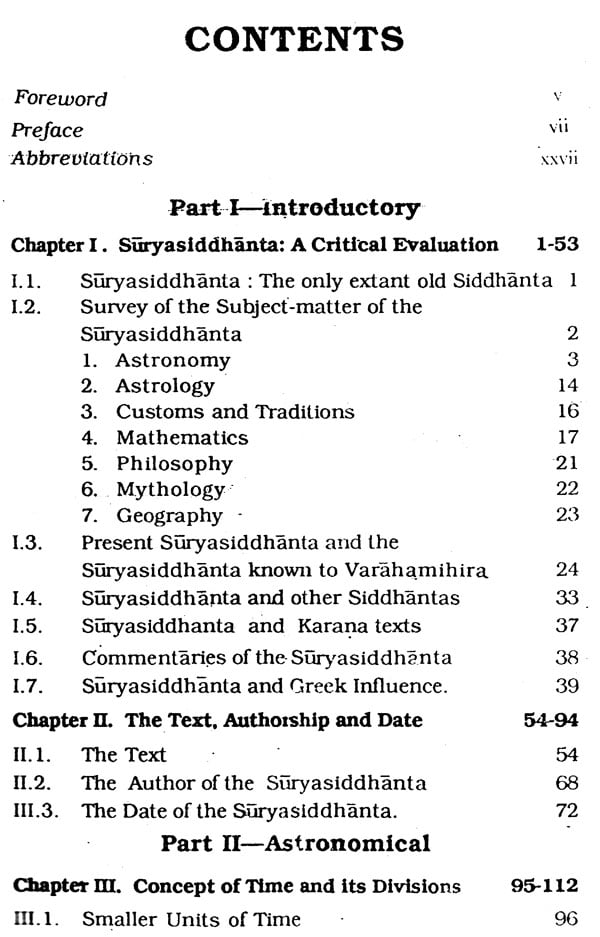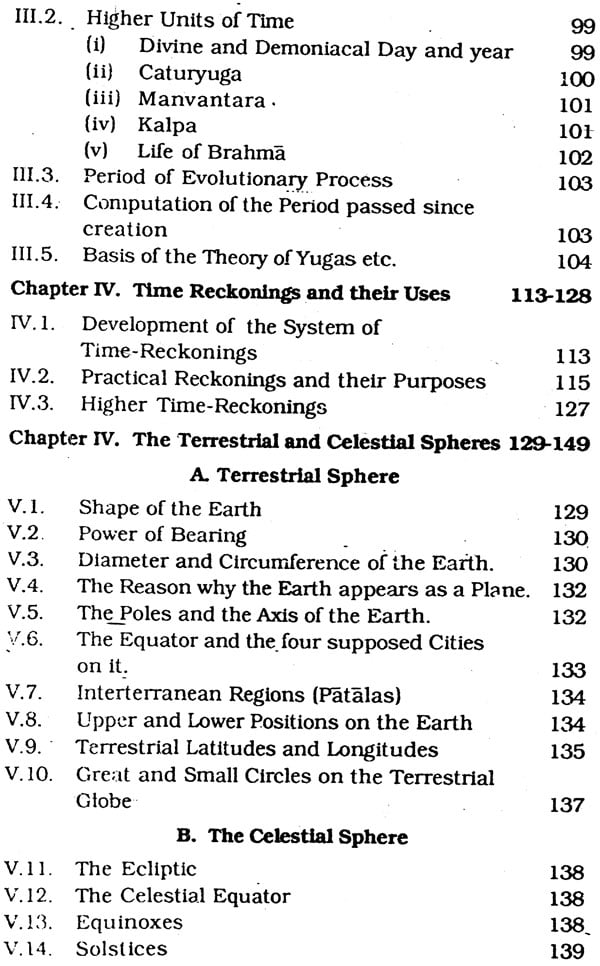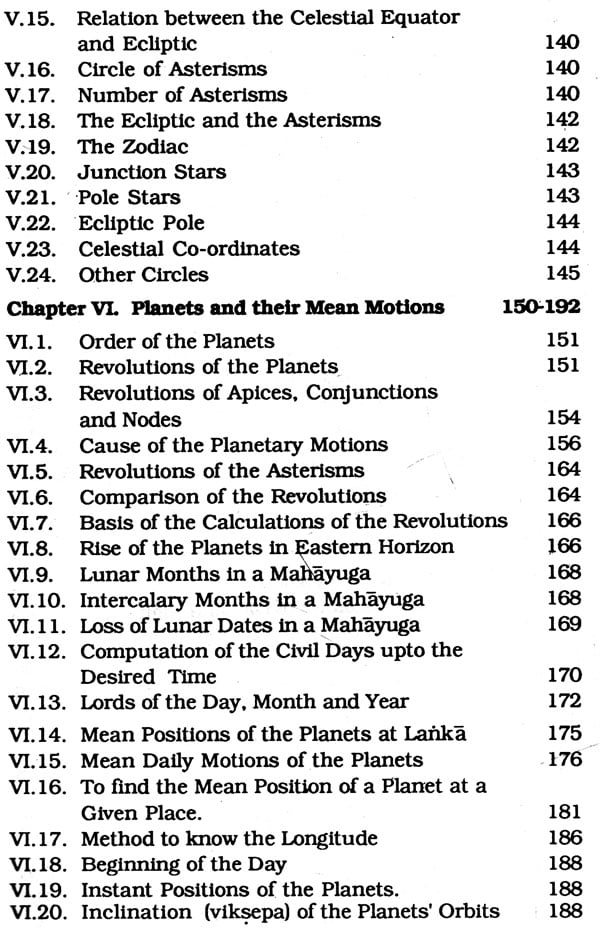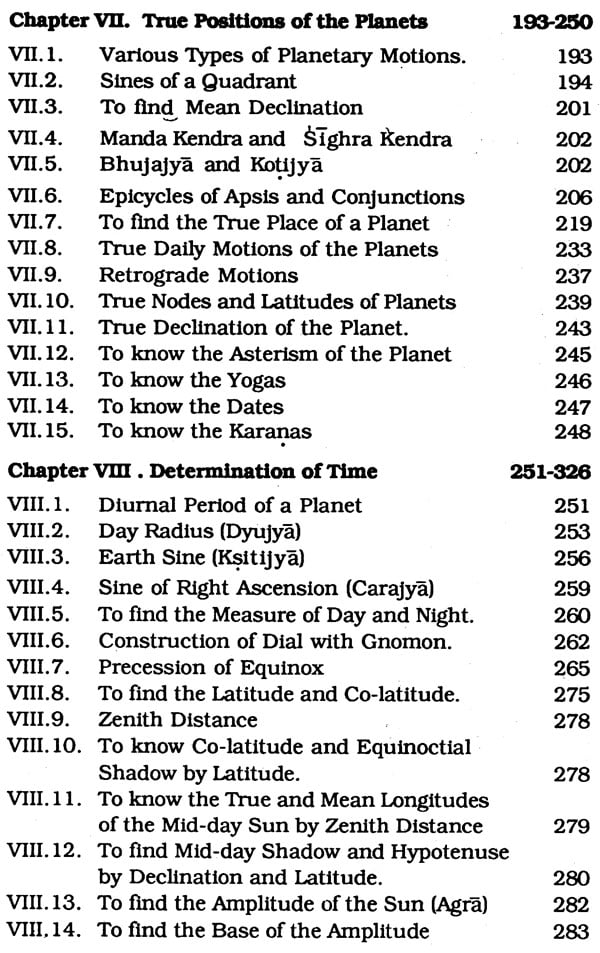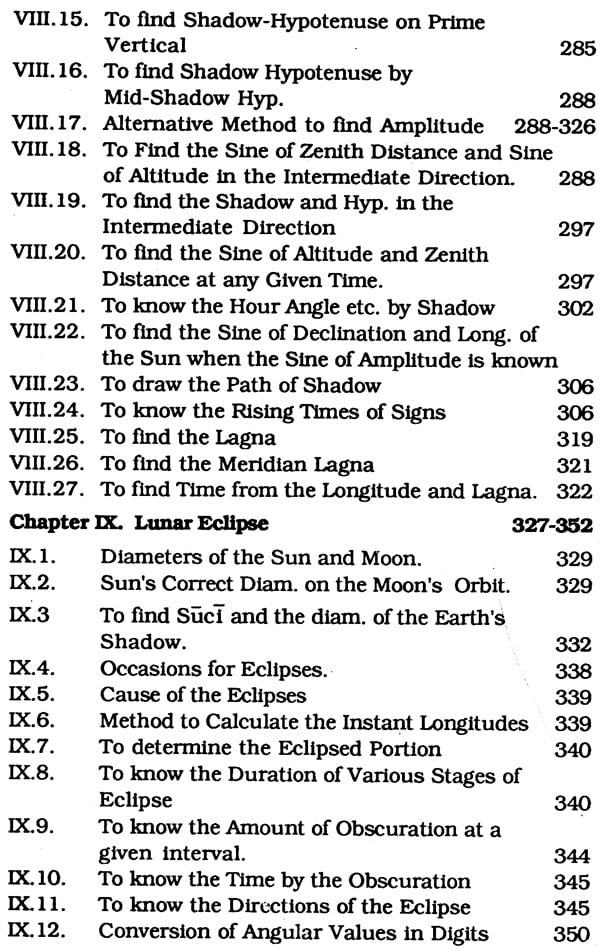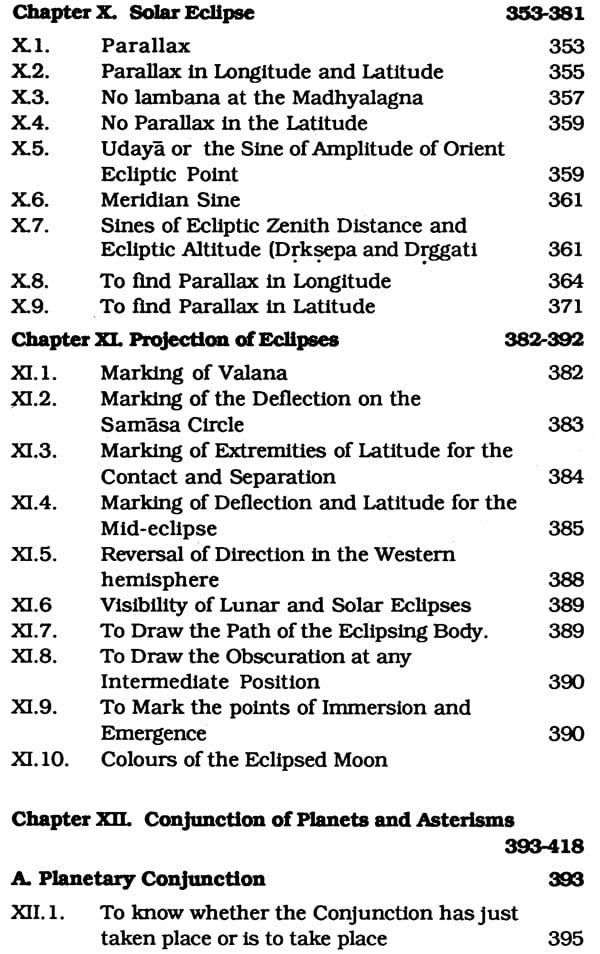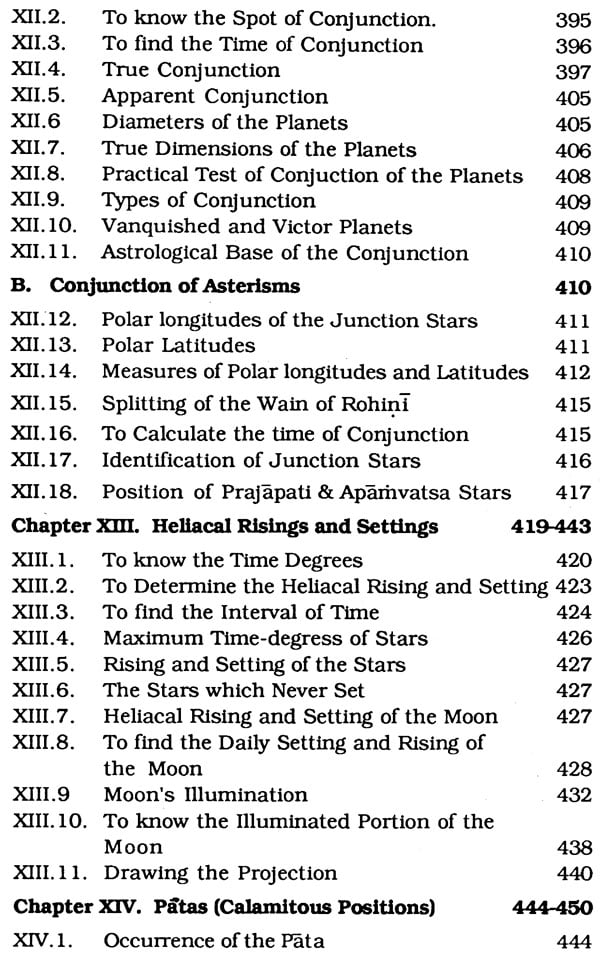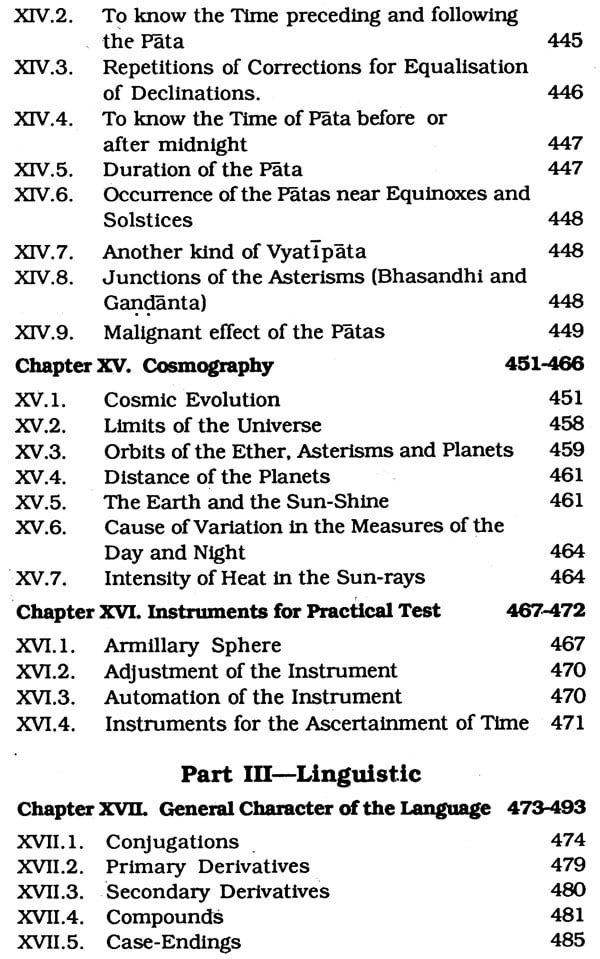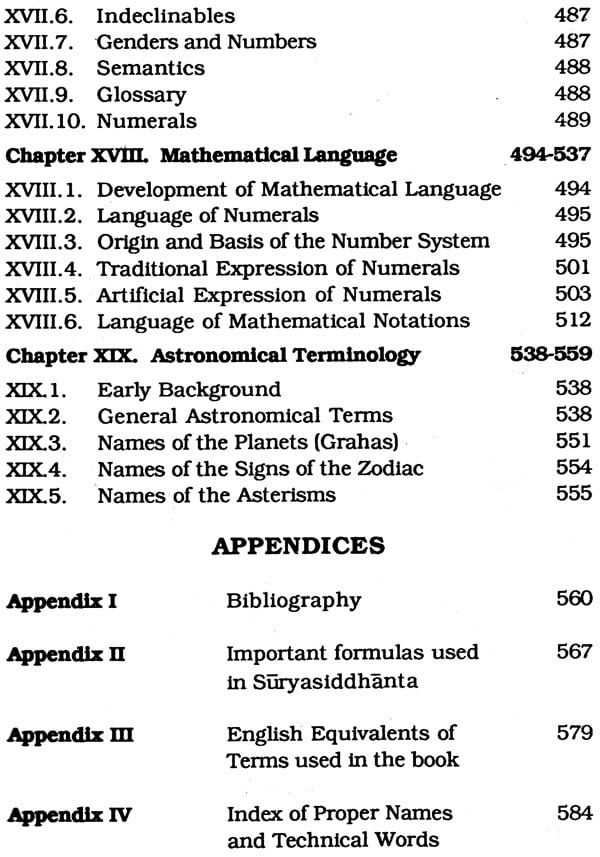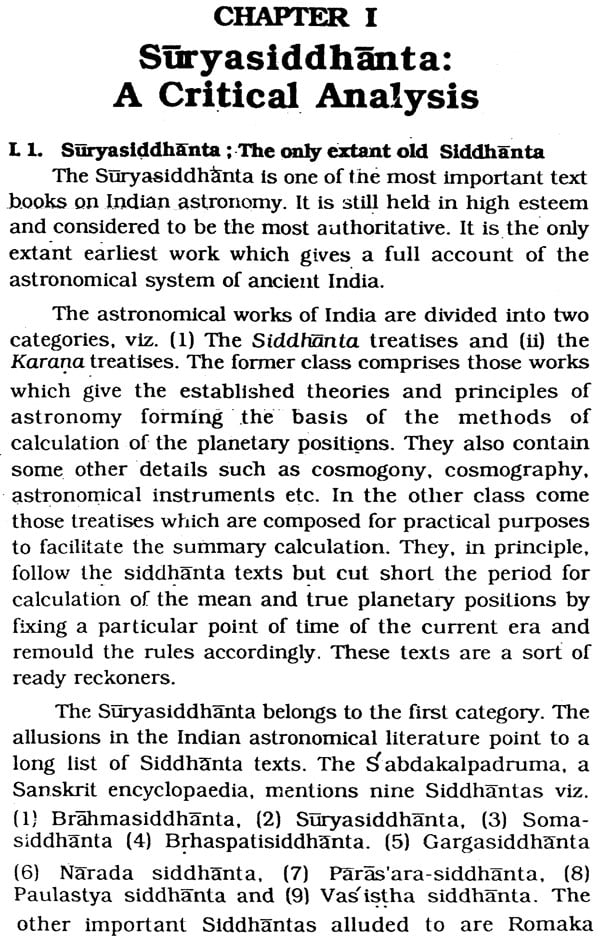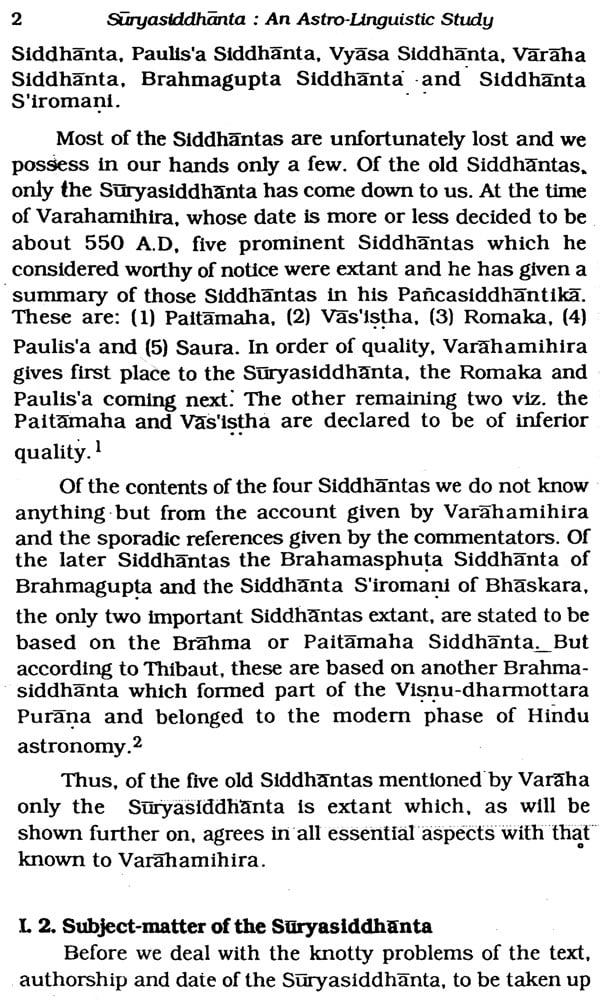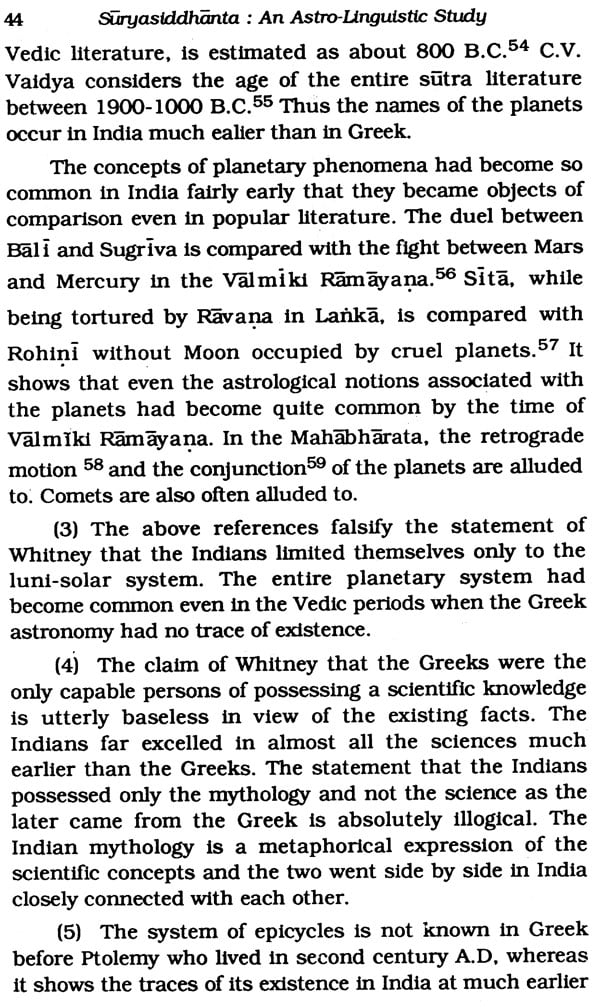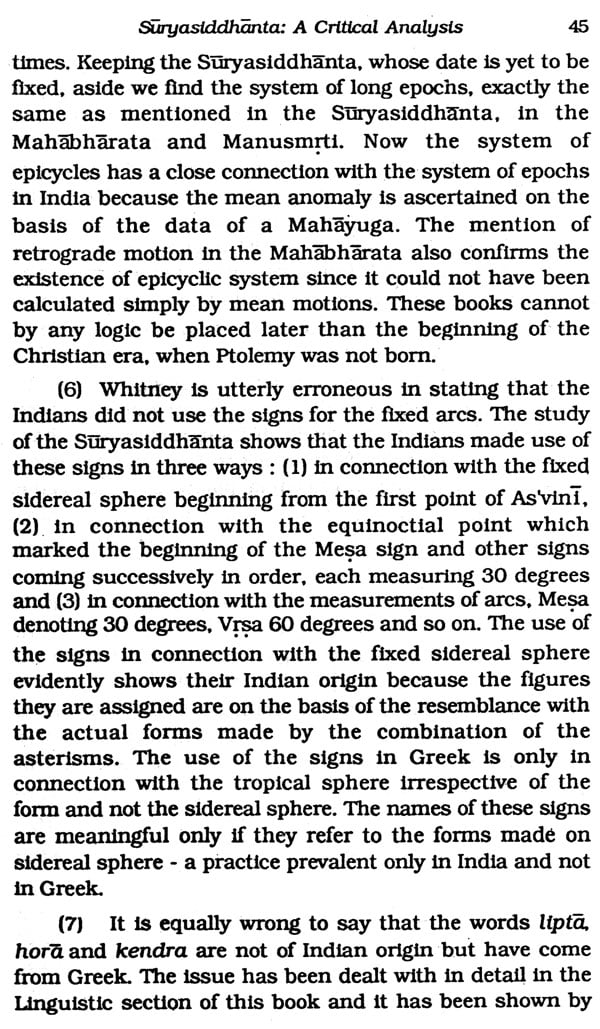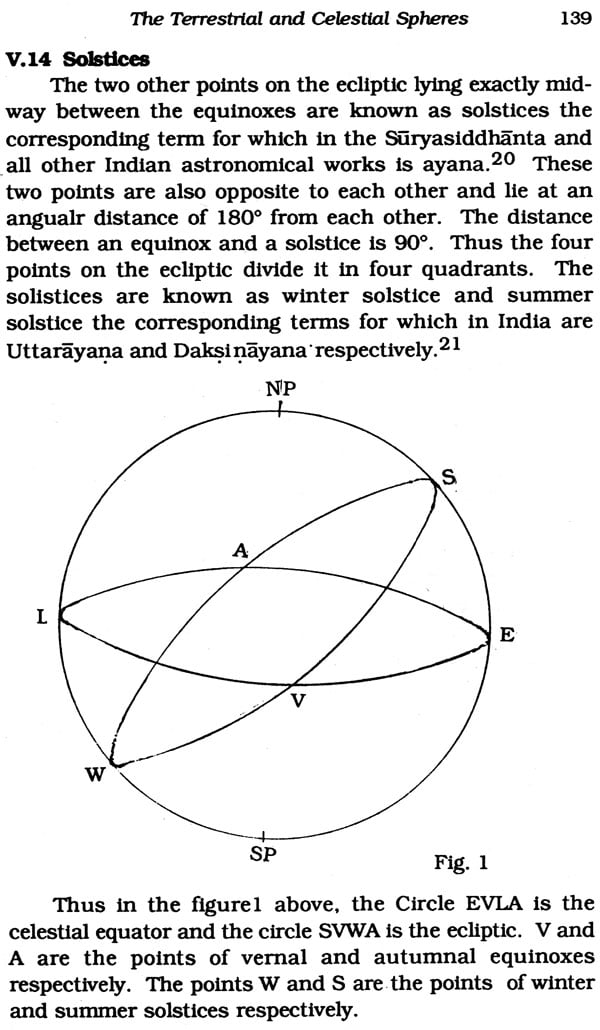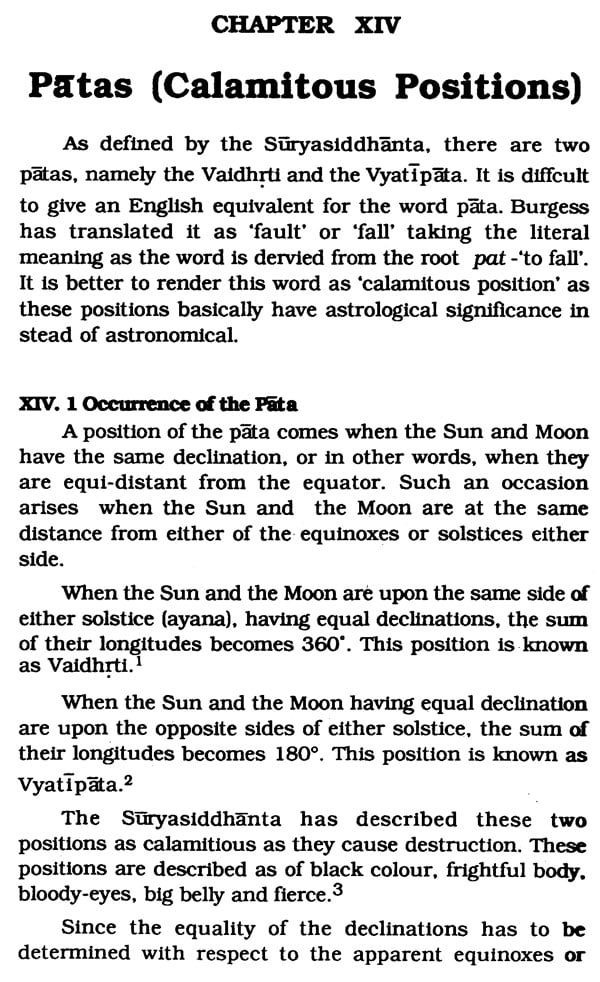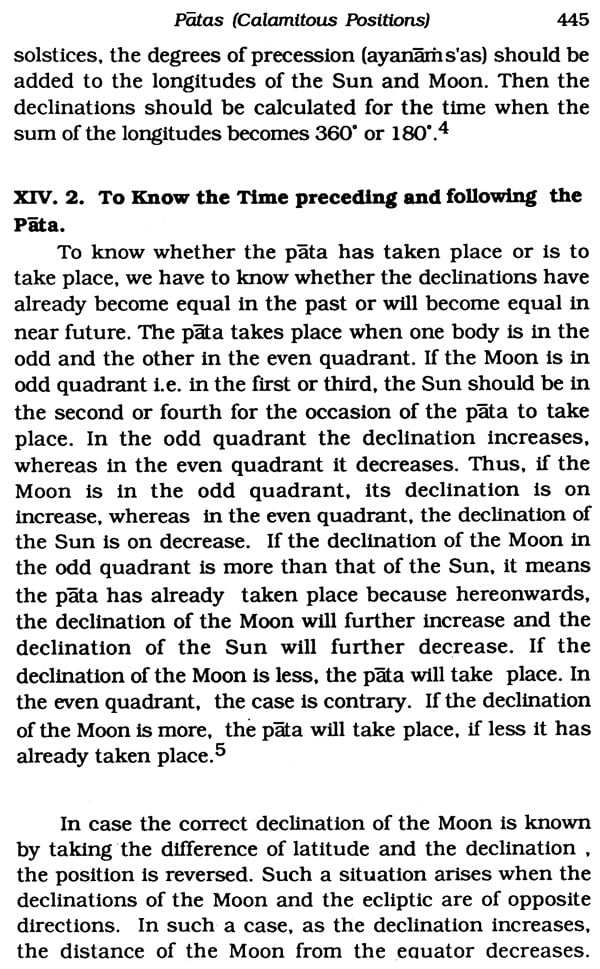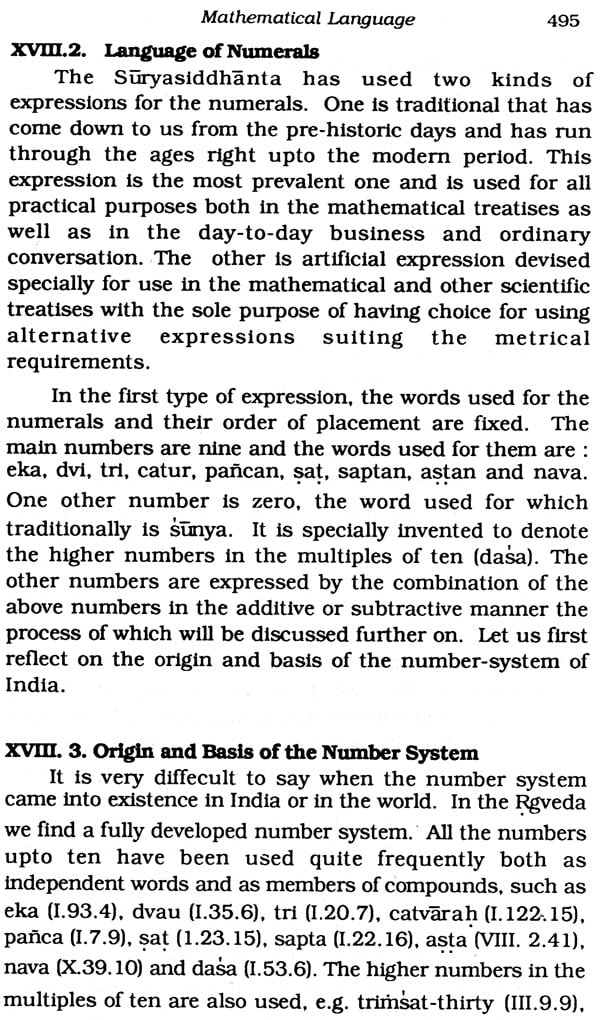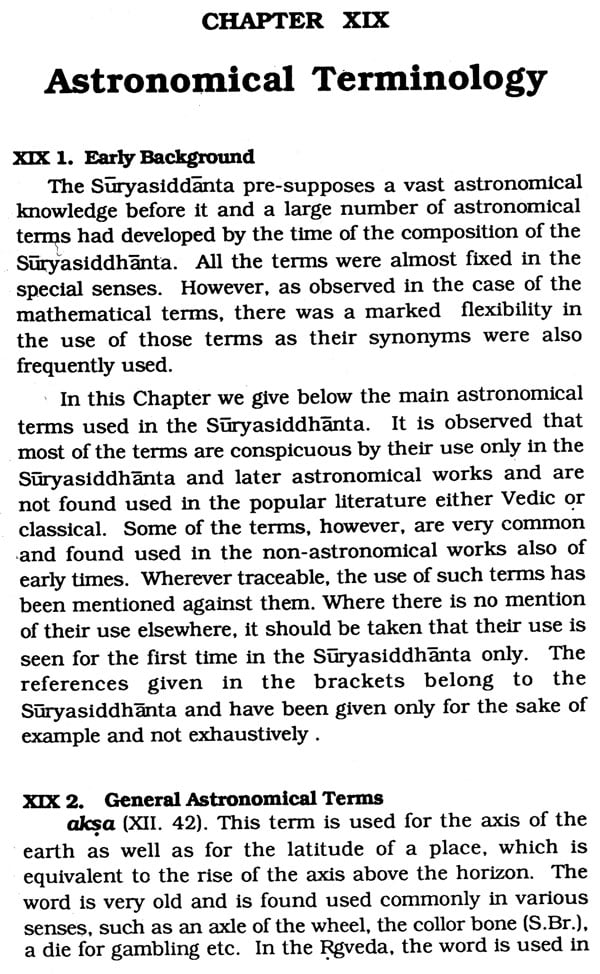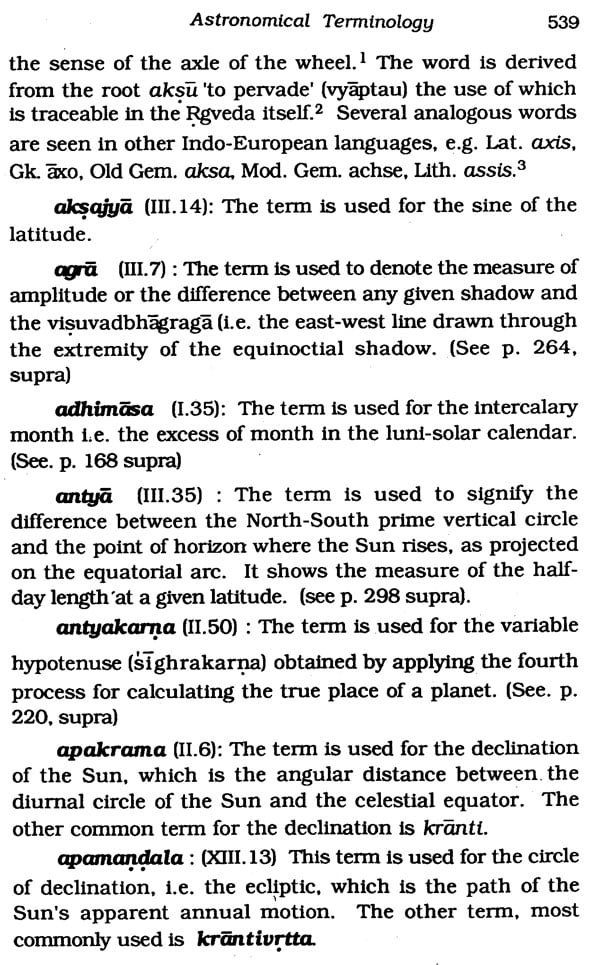
Suryasiddhanta (An Astro-Linguistic Study)
Book Specification
| Item Code: | NAR194 |
| Author: | Dr. Sudhikant Bharadwaj |
| Publisher: | Parimal Publication Pvt. Ltd. |
| Language: | English |
| Edition: | 2022 |
| ISBN: | 9788171101023 |
| Pages: | 636 |
| Cover: | HARDCOVER |
| Other Details | 9.00 X 6.00 inch |
| Weight | 800 gm |
Book Description
India with its glorious past and magnificent contribution in all branches of knowledge, has made a spectacular progress in the field of astronomy. As a result. the basic astronomical principles of ancient India have stood the test through a long interval of time and are still very much relevant. The Indians-were accurate observers of celestial sphere and have been updating their calculations commensurate with the actually observed positions. The earliest part of the vast literature produced during Vedic period on the subject of astronomy has not come down to on in its entirety. But fortunately, we still possess in our hand a considerable literature on astronomy giving full knowledge of Indian astronomical principles.
Dr. Sudhi Kant Bharadwaj, who has a rare combination of the knowledge of the Sanskrit language and the subject of Astronomy, has done a commendable work in his present study entitled "Suryasiddhanta: An Astro-Linguistic Study". The present study divided into three parts viz, (1) Introductory (2) Astronomial and (3) Linguistic. deals extensively with various aspects of the Suryasiddhanta, an ancient Indian text on astronomy. This study, assiduously canted out by the author, as vouched for by the extensive treatment of the subject, is a remarkable contribution to the field of knowledge and will be welcome. I hope, by the Sanskritists, modern astronomers and general readers.
It is well known that India played a significant role in ancient times in the development of the science of astronomy and there is no exaggeration in saying that India ranks among the first nations who taught this science to the world. In the Vedic period itself, astronomy had taken the form of a full fledged science and was included among the six auxiliary lores of the Veda known as Jyotisa Vedariga. But unfortunately no text giving full account of the astronomical knowledge of Vedic period has come down to us. In the name of the Vedariga Jyotisa only a small treatise containing only a few verses haS been handed down to us which gives only a fragmentary knowledge of astronomical science of yonder days. It is only from the astronomical allusions scattered in the ancient Indian literature, mythological personification of astronomical concepts and the quotations from some ancient works given by the later texts, that we get some idea of the oldest concepts of Indian astronomy.
The real history of Indian astronomy begins from the period of the Suryasiddhanta which is the only earliest full-fledged text on astronomy now extant. The copious work which India produced on the subject of astronomy in the later periods follows the system of the Suryasiddanta in all essential aspects. This text-book is still the most authoritative and popular and is taught in the institutions where the subject of Indian astronomy is taught.
While we have full pride in India's past for the development of astronomical science, the present position is extremely shocking. Except in. a fern institutions running on oriental lines, the subject of astronomy, particularly Indian astronomy is out of the purview of the curriculum. It has resulted into a steep decline of this science in India.
The ancient Indian texts on astronomy have not yet foregone their utility and can still be useful for all practical purposes with a few improvements necessitated by the interval of time. Though some of the old concepts of astronomical principles have changed. yet the basic principles are the same as contained in the Indian texts. The first necessity is, therefore, to bring the contents of the ancient texts to the light of the modern mathematicians and astronomers who may evaluate the real worth of Indian astronomy and update that with the most modern methods and instruments. The greatest predicament, however, is the language. The old Indian texts are in Sanskrit language with which the modern mathematicians and astronomers are not conversant. The Sanskrit scholars on the other hand, lack the knowledge of this technical science and concentrate on research mostly in the fields of Sanskrit language, literature, philosopy etc. with the result that these texts are not taken up for research by either class of scholars.
We are grateful to early European scholars who took keen interest in Indian astronomy and rendered valuable service by trying to explore the merits of this ancient lore of India. Sir William Jones, Colebrooke, Bain), Playfair, Bentley, Brennand, Thibaut, Burgess, Whitney, Weber etc. are some of the important names who contributed some valuable essays on Indian astronomy, critically edited some of the ancient texts and brought out their translations with critical notes. They were the first to offer a comparison between the Indian and European systems and pointed out striking similarities in the Indian and Greek systems. They deserve full credit for making this great Indian science known to the modern world. However, the early researches made by them suffered from some natural infirmities. In the first place, they did not possess in their hands by that time sufficient material to make a true analysis of Indian astronomy: Secondly, they came here with a strong notion that Greek was the originator of the science of astronomy and was superiormost of all nations to the world in ancient days. Therefore. whenever they noted some similarities in the Indian system with those in the Greek they instantly concluded without going into depth that the former was the borrower. They never thought of the possibility of being the other way. Thirdly, they squeezed the entire early literature of India within the period of 1500 years before the Christian era and were, therefore, forced to draw erroneous results with regard to the chronology though the astronomical facts suggested more ancient dates. Fourthly, they considered the Alexander's invasion (326 B.C) as the upper limit of Indian contact with Greek and whatever work contained the word yavana was naturally considered to be of the post - Alexandarian period. These are the general notions which weighed in the minds of early researchers both European and Indian, and are still held by many as the true yardsticks. The latest researches, however have belied the above notions but they are so deep-rooted and established. howsoever fallacious they are, that our thinking is totally influenced by them. Therefore, the necessity is to re-examine the entire Indian literature with a free mind.
The tradition of modern research introduced by the Europeans in India is being perpetuated in almost all the fields with a conspicuous exception of astronomy. Whatever work was done by the early scholars is still the last line. Even in the early days of modern research, astronomy comparatively received the minimum attention. The European scholars could do nothing more than the translation only of a few works with, of course critical and exegetical notes. No systematic study of any text has been made by them in full detail as their attention has been mainly on the astronomical rules and not on other aspects.
**Contents and Sample Pages**
